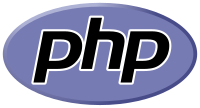Ah, PHP—loved by many, cursed by some, and misunderstood by plenty! If you've ever wondered, "Where did this language come from, and why is it still around?" then grab your favorite snack because we're about to take a trip down PHP memory lane. Spoiler alert: It all started with one guy just trying to avoid repetitive coding. (Relatable, right?)
The Birth of PHP (1994)
Picture this: It’s 1994. The internet is young, websites are static, and web developers are just figuring things out. Enter Rasmus Lerdorf, a Danish-Canadian programmer who wanted an easier way to track visits to his personal homepage. Instead of manually updating the counter (because who has time for that?), he wrote a set of scripts in C.
He called it “Personal Home Page Tools” (PHP Tools)—yep, that’s where PHP got its name. He had zero plans to create a full-fledged programming language, but fate had other ideas. Soon, people started asking for his scripts, and he thought, "Why not share them?" And just like that, PHP was born.
PHP 2.0 – The Growth Begins (1995)
By 1995, PHP had evolved into PHP/FI (Personal Home Page / Forms Interpreter). It was still a basic tool but could now handle database interactions and form submissions—things that made websites feel alive. Developers started using it, and PHP began its journey toward internet domination.
PHP 3.0 – The Game Changer (1998)
This is where things got serious. Two developers, Zeev Suraski and Andi Gutmans, rewrote the core of PHP, making it more powerful and flexible. PHP 3.0 officially became PHP: Hypertext Preprocessor (yes, the recursive acronym we all know and love). It supported object-oriented programming (OOP) and became open-source, which meant anyone could contribute and improve it.
PHP 4.0 – Performance Boost (2000)
PHP 4 came with the Zend Engine, making it faster and more stable. At this point, PHP was already powering a significant chunk of the web. Developers loved it because it was easy to learn, worked well with databases, and (let’s be honest) had way fewer semicolons than Java.
PHP 5.0 – The OOP Era (2004)
This version introduced proper Object-Oriented Programming (OOP), making PHP more structured and scalable. It also brought better XML handling and a more robust Zend Engine 2. Basically, PHP was growing up.
PHP 6.0 – The Version That Never Was (Mid-2000s)
Fun fact: PHP 6 was planned but never fully released. The goal was to introduce native Unicode support, but it turned into a disaster (performance issues, lack of adoption, and developer headaches). So, the PHP community basically said, "Let's pretend this never happened," and skipped straight to PHP 7.
PHP 7.0 – Speed and Power (2015)
With PHP 7, everything changed. It brought a huge performance boost (almost twice as fast as PHP 5), better memory management, and new features like scalar type hints and return type declarations. Suddenly, PHP was cool again.
PHP 8.0 – Modernizing PHP (2020)
PHP 8 introduced Just-In-Time (JIT) compilation, making it even faster. It also added attributes, named arguments, match expressions, and nullsafe operators—fancy stuff that made PHP feel more modern and developer-friendly.
PHP Today (2025 and Beyond)
Despite the rise of JavaScript frameworks and Python, PHP still powers over 75% of the web. WordPress, Laravel, and even big platforms like Facebook and Wikipedia rely on PHP.
With regular updates and a massive community, PHP is here to stay. So, if anyone tells you "PHP is dead," just remind them that over 75% of websites disagree.
Conclusion
To sum up:
- PHP started as a simple tool for one guy's website in 1994.
- It grew into a powerful scripting language thanks to open-source contributions.
- PHP 7 and 8 made it faster, more modern, and more reliable.
- It still dominates the web today, and it's not going anywhere soon.
So, the next time someone asks, "Why PHP?" just smile and say, "Because it's the backbone of the internet."

0 Comments